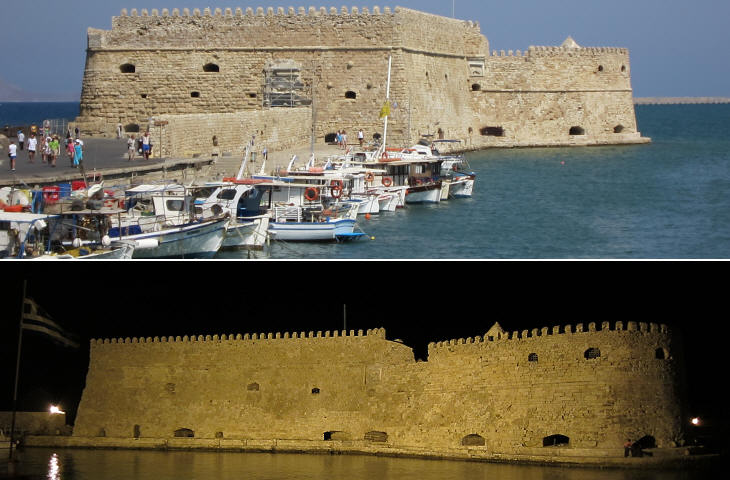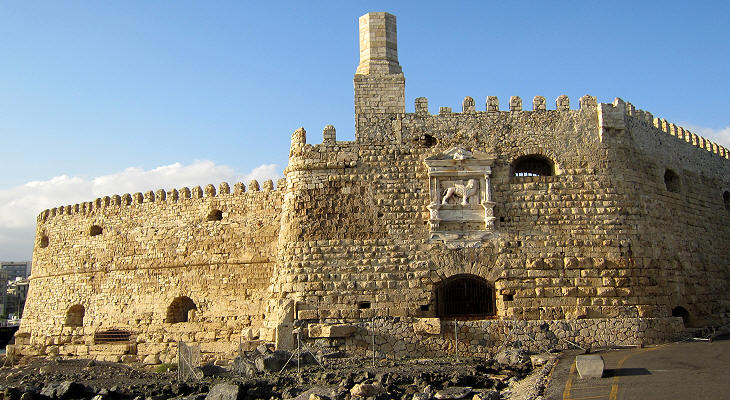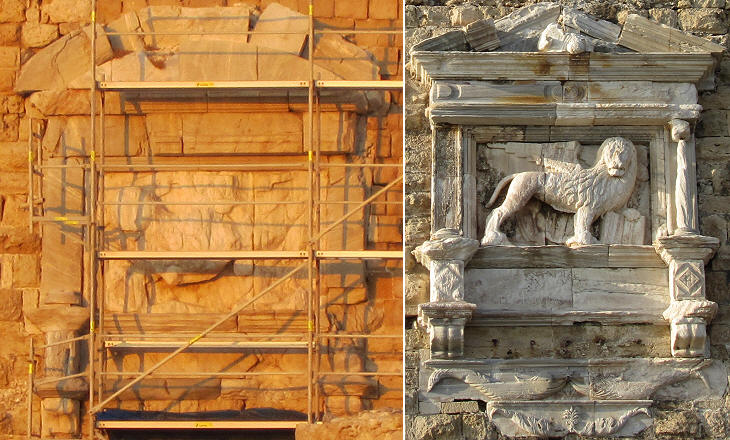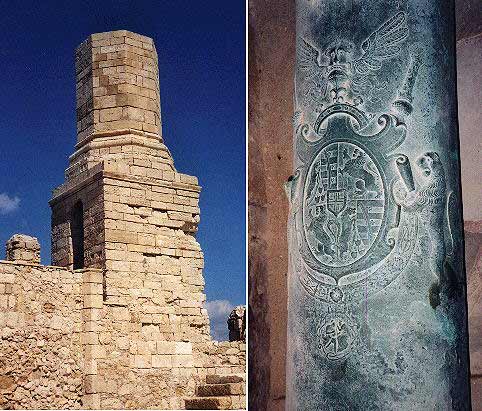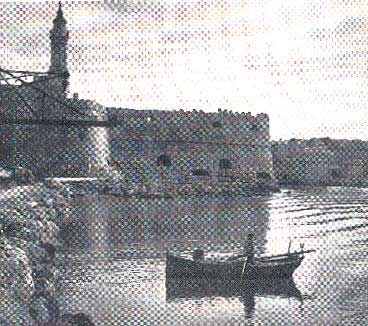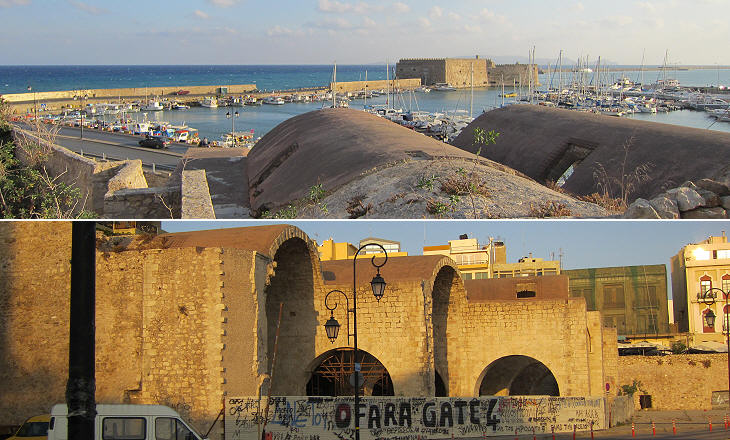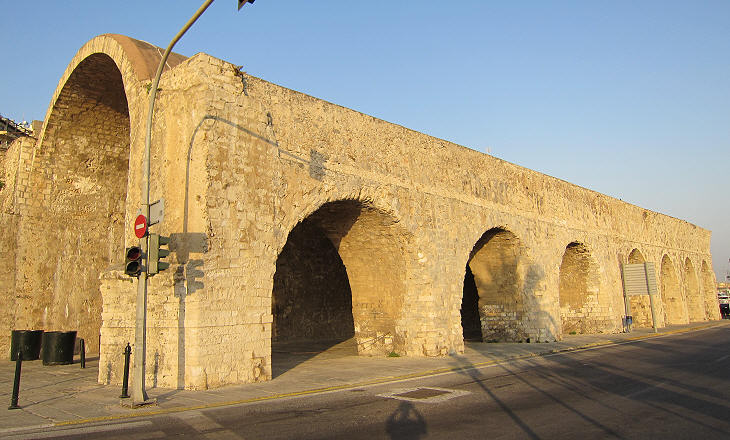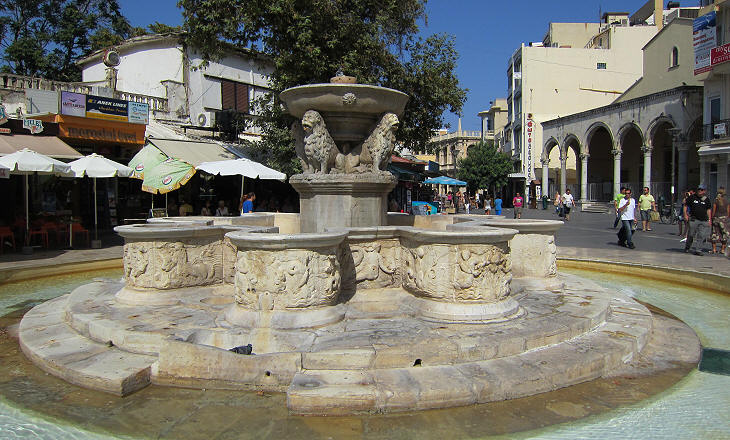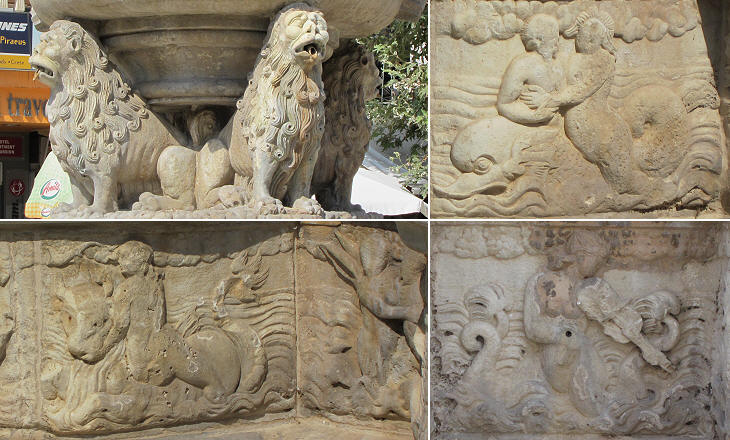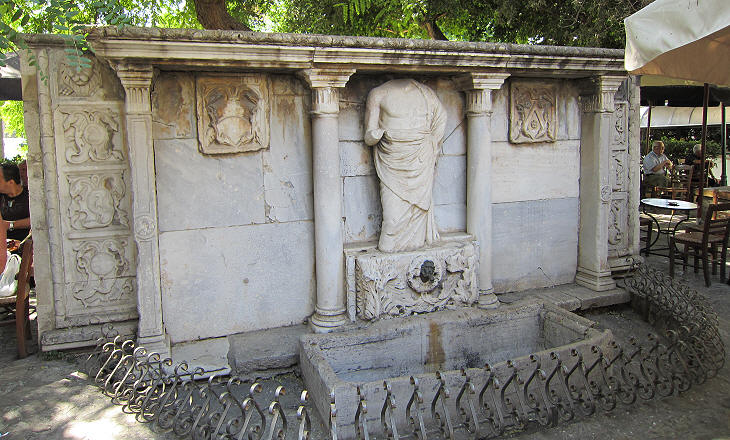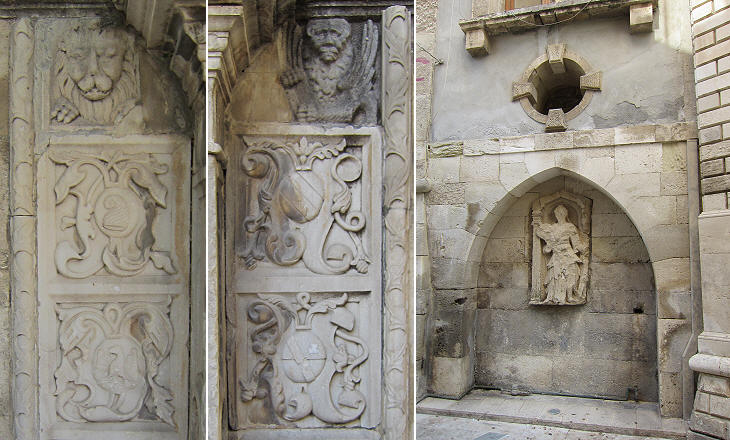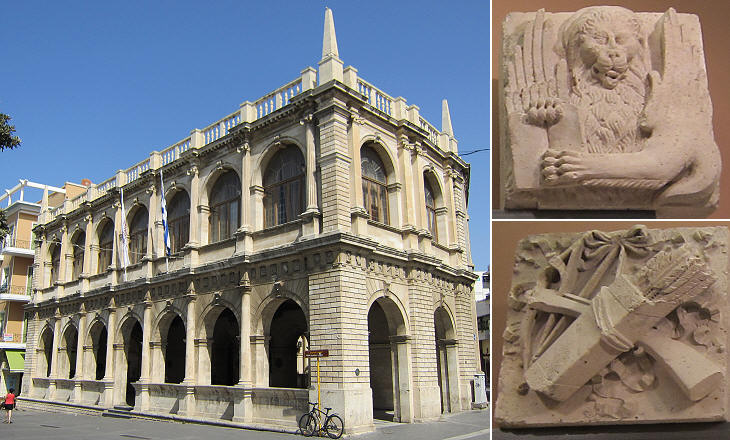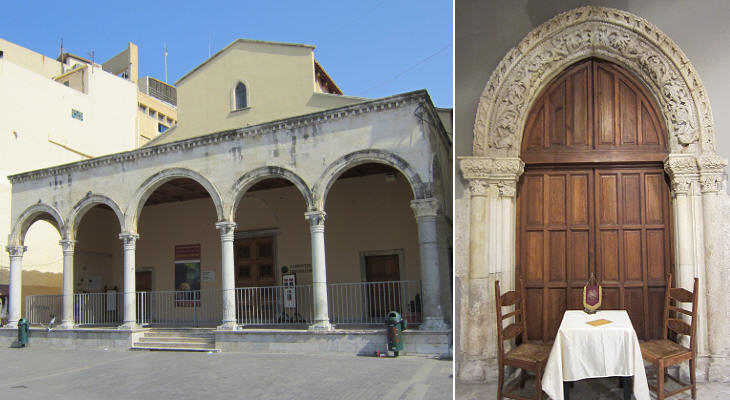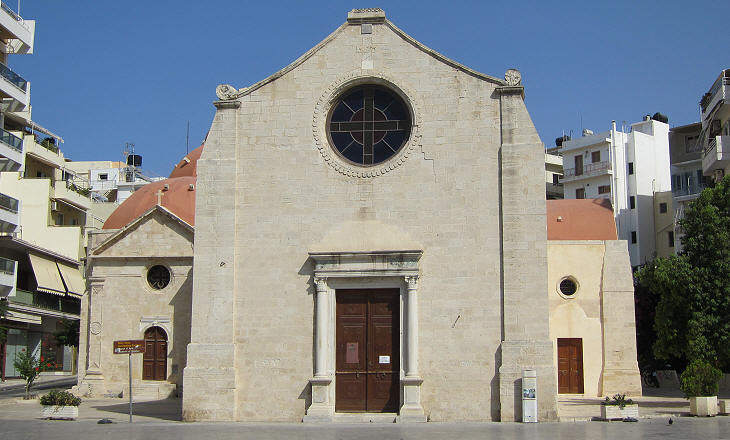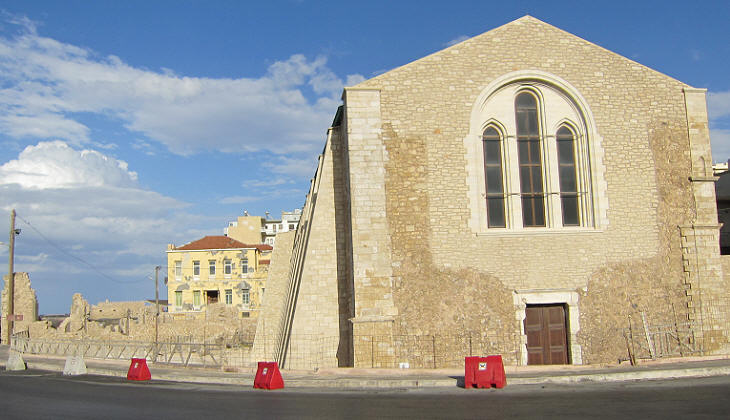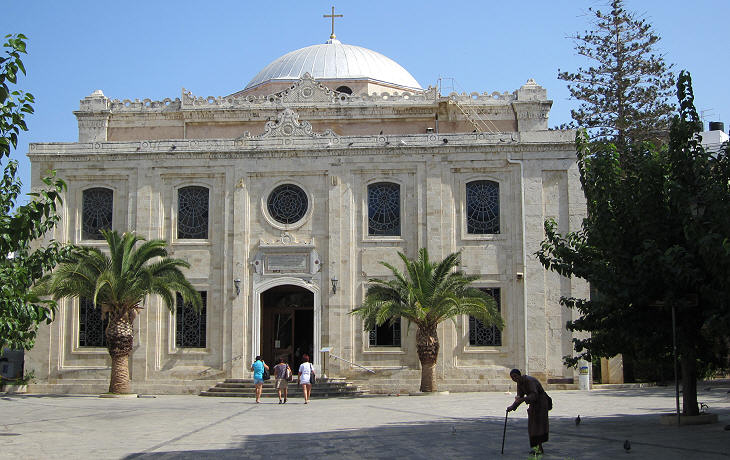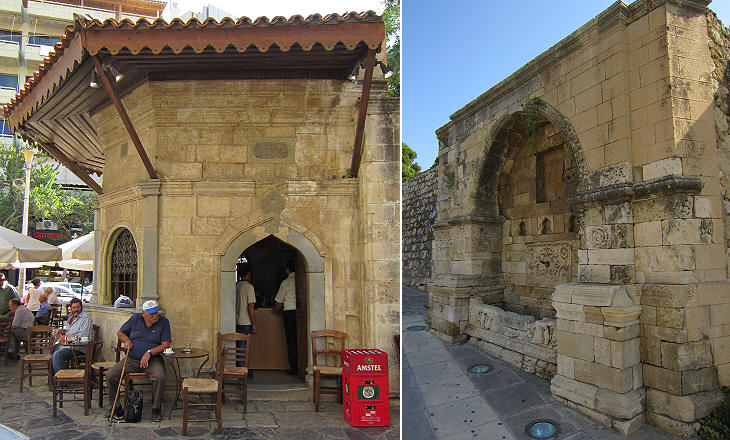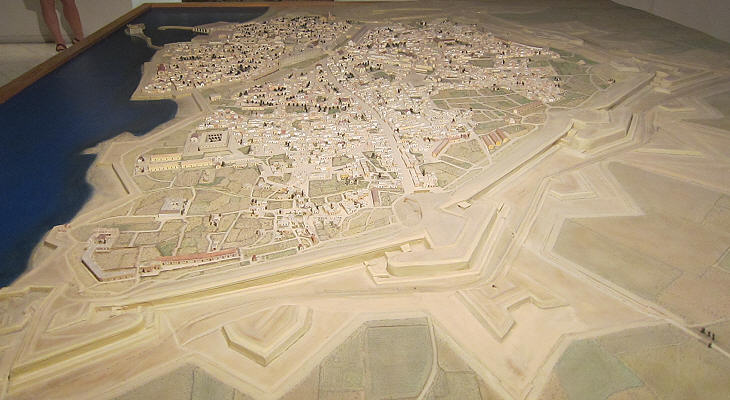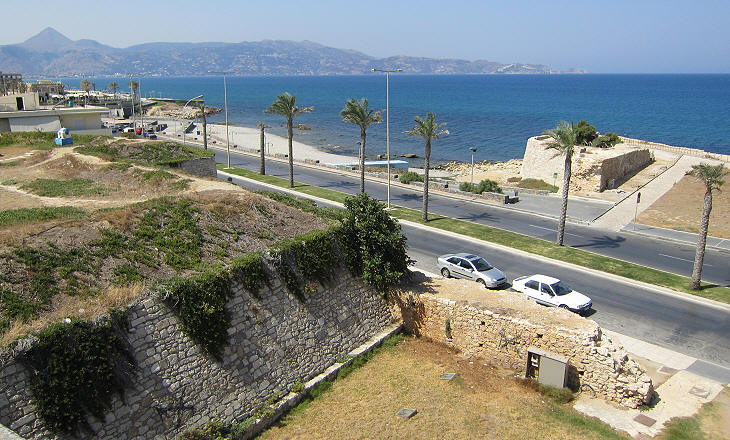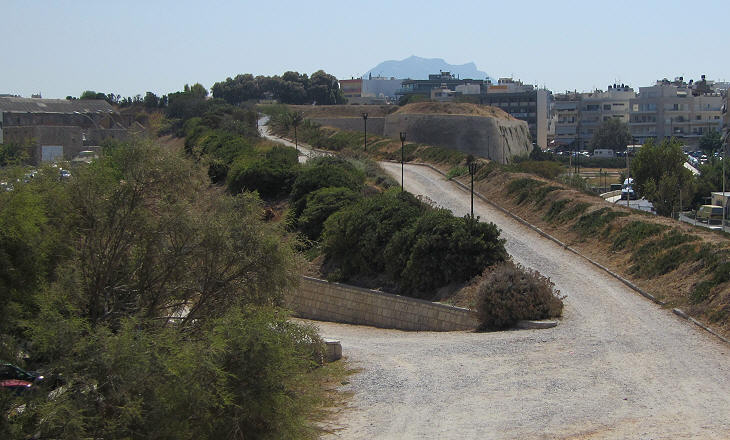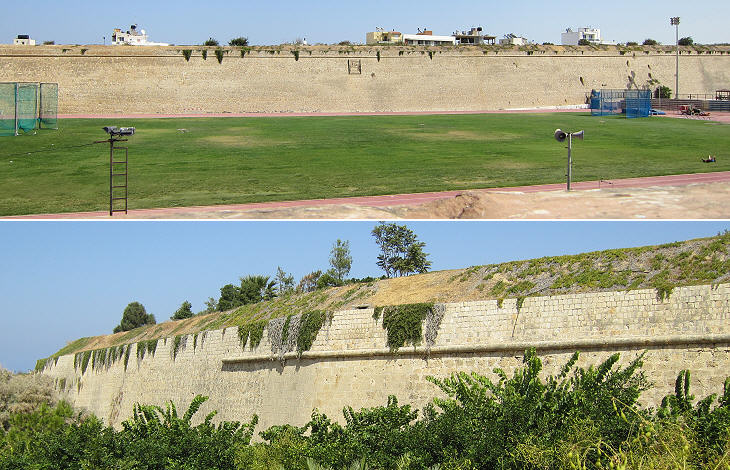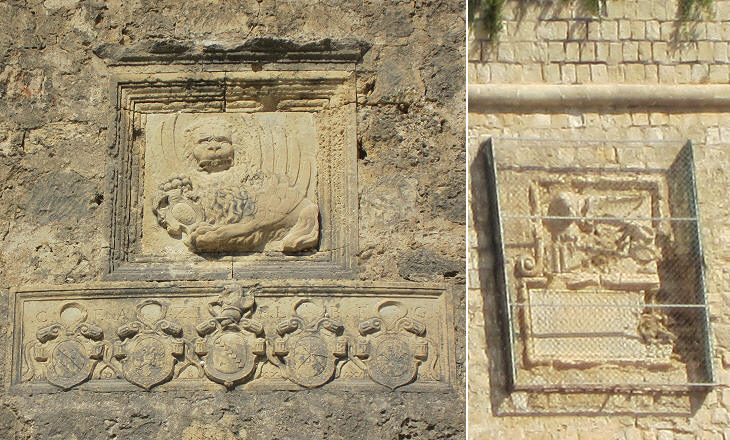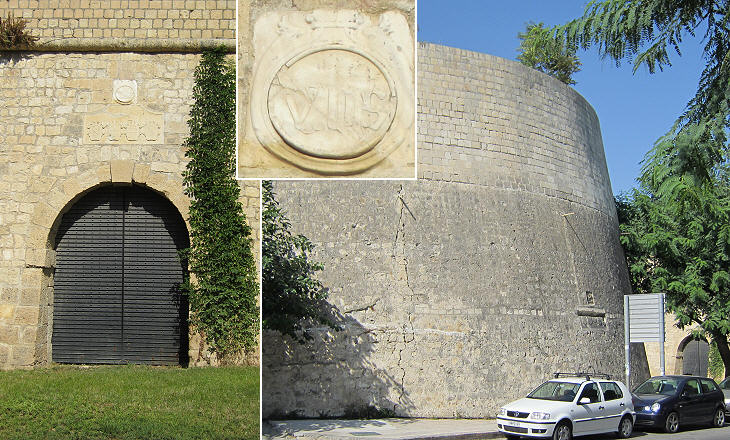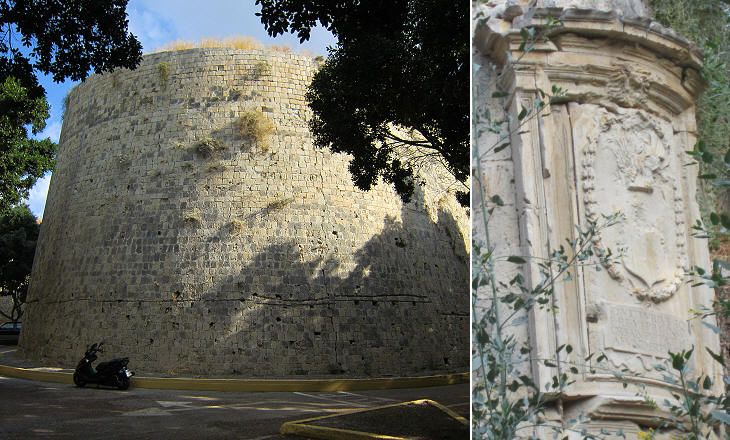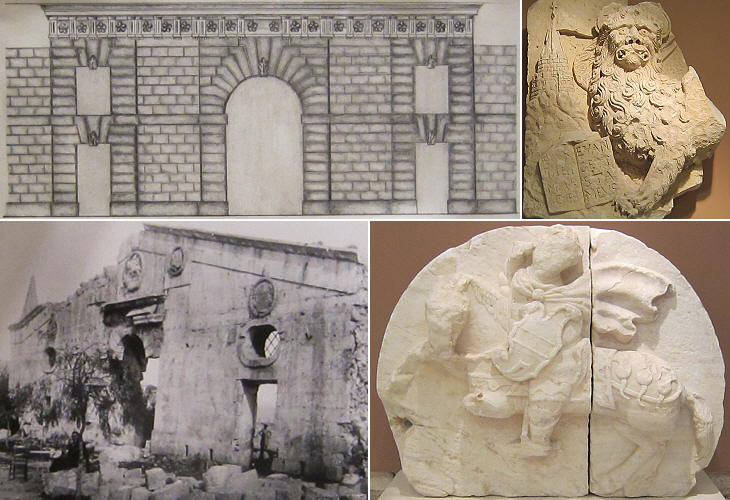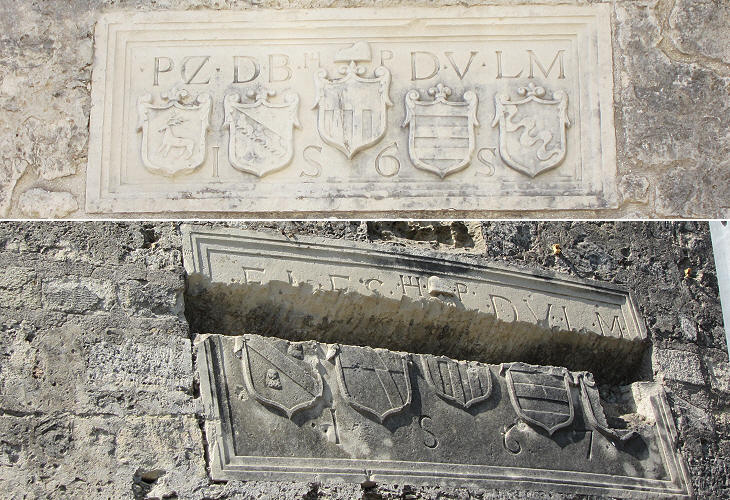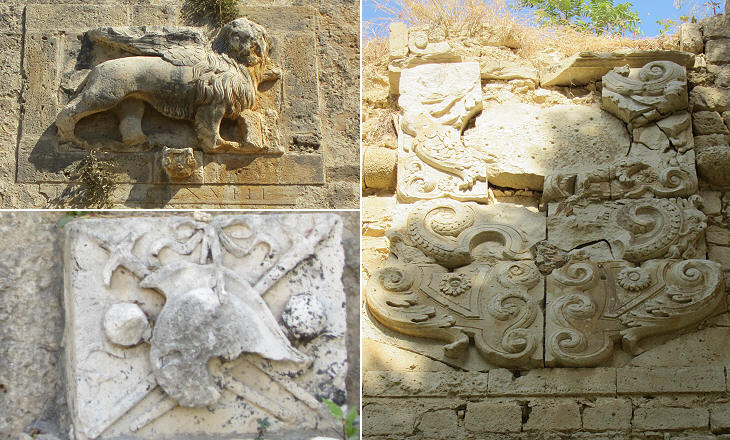  What's New! Detailed Sitemap All images © by Roberto Piperno, owner of the domain. Write to romapip@quipo.it. Text edited by Rosamie Moore. |
Candia - page one
Candia was a minor port called Heraclium by the Romans not far from Cnossus, the ancient
capital of the Minoan civilization. It was conquered by the Arabs in 826 and
renamed by them with reference to a ditch (Qandiah) which protected the town (there is still a street with
this name - Odos Handakos). The name was maintained by the Byzantines when they reconquered Crete in 961 and
italianized in Candia by the Venetians, who extended its meaning to the whole island. Today
it is known as Iraklion after Heraclium.
The fortress was built in 1523-1540 as a reaction to the corsair raids of Khair ed din.
Although being built for military purposes it has the proportions and the fine shape of a work of art.
Unlike other fortresses or Venetian buildings, the sea castle is still in good condition and the symbols of the Venetian rule have not been erased. This is due to the admiration for the resistance of Candia during more than twenty years of siege (1647-1669): an admiration eventually shared by the attackers themselves.
The resentment against the Turkish occupation which lasted until 1897 and nominally until 1913 led to the cutting of a minaret/lighthouse built by the Turks on the ramparts of the fortress.
The Arsenal The Venetians built a large arsenal where ships could be built or repaired. The Venetian navy was based on galeazze, ships moved by rows and armed with heavy artillery.
The Venetian navy was based on galeazze, ships moved by rows and armed with heavy artillery.
blllll The Fountains The Venetians built a large arsenal where ships could be built or repaired. The Venetian navy was based on galeazze, ships moved by rows and armed with heavy artillery.
The Venetian navy was based on galeazze, ships moved by rows and armed with heavy artillery.
The Venetian navy was based on galeazze, ships moved by rows and armed with heavy artillery.
The Venetian navy was based on galeazze, ships moved by rows and armed with heavy artillery.
bllallalal Other Monuments The Venetians built a large arsenal where ships could be built or repaired. The Venetian navy was based on galeazze, ships moved by rows and armed with heavy artillery.
The Venetian navy was based on galeazze, ships moved by rows and armed with heavy artillery.
The Venetian navy was based on galeazze, ships moved by rows and armed with heavy artillery.
The Venetian navy was based on galeazze, ships moved by rows and armed with heavy artillery.
The Venetian navy was based on galeazze, ships moved by rows and armed with heavy artillery.
The Venetian navy was based on galeazze, ships moved by rows and armed with heavy artillery.
bllallalal Walls The Venetians built a large arsenal where ships could be built or repaired. The Venetian navy was based on galeazze, ships moved by rows and armed with heavy artillery.
The Venetian navy was based on galeazze, ships moved by rows and armed with heavy artillery.
The Venetian navy was based on galeazze, ships moved by rows and armed with heavy artillery.
The Venetian navy was based on galeazze, ships moved by rows and armed with heavy artillery.
The Venetian navy was based on galeazze, ships moved by rows and armed with heavy artillery.
The Venetian navy was based on galeazze, ships moved by rows and armed with heavy artillery.
The Venetian navy was based on galeazze, ships moved by rows and armed with heavy artillery.
The Venetian navy was based on galeazze, ships moved by rows and armed with heavy artillery.
The Venetian navy was based on galeazze, ships moved by rows and armed with heavy artillery.
The Venetian navy was based on galeazze, ships moved by rows and armed with heavy artillery.
Go to page two. Introductory page on the Venetian fortresses in Crete Grambusa (Granvousa) and Castello (Kasteli/Kissamos) La Canea (Xania) and Souda Rettimo (Rethimno) Spinalonga Sittia and Paleocastro Castelfranco (Frangokastelo) and other castles on the southern coast Introductory page on the Venetian fortresses You may refresh your knowledge of the history of Venice in the Levant by reading an abstract from the History of Venice by Thomas Salmon, published in 1754. The Italian text is accompanied by an English summary. (in the background of this page a relief of the Morosini fountain showing the abduction of Europe) |
